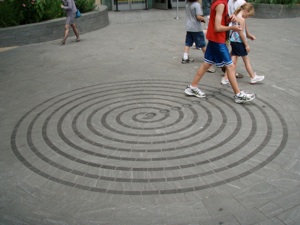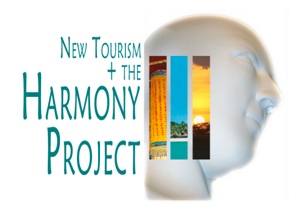

The Harmony Project sponsored two Bhutanese architects to help construct a temple on the National Mall, across from the Smithsonian Castle. A week was spent attending the the very professional exhibition to learn about the prospective HP destination, confirm its prospects and to begin networking with individuals that may be of help and who are interested in the project.
-
 JUNE 30, 2008: Washington DC, USA
JUNE 30, 2008: Washington DC, USA
We spent the morning on the Mall when the summer weather was the most endurable. The afternoons were spent either in museum galleries or movie presentation rooms. The Freere Gallery participated in the Bhutanese program by showing a collection of films.
LINKS:
-
 Here is a link download for a wonderful article that introduces the Bhutan destination as presented in the Folkfestival program. It is written by Preston Scott, the curator for the Bhutan portion of the event and the gentleman HP is eager to travel to Bhutan with later in the year to start the process of considering this dynamic so fitting to the HP Model.
Here is a link download for a wonderful article that introduces the Bhutan destination as presented in the Folkfestival program. It is written by Preston Scott, the curator for the Bhutan portion of the event and the gentleman HP is eager to travel to Bhutan with later in the year to start the process of considering this dynamic so fitting to the HP Model. -
 The Harmony Project sponsored two of the dozen architects to building the temple on the Mall. <link>
The Harmony Project sponsored two of the dozen architects to building the temple on the Mall. <link> -
 Here is the link to other videos taken during the festival by the Smithsonian staff.
Here is the link to other videos taken during the festival by the Smithsonian staff.
The indigenous medicine exhibit was an effective introduction to this important cultural attribute. Three to four healers were available to answer questions and present their medicine and techniques. Photos taken during the festival have been uploaded to Flickr.
Bhutan Folkfestival - Smithsonian



Indigenous medicine further explained in the linked poster to the left.
The Thirteen Traditional Arts
The visual arts were very well represented. Zorig chusum (the thirteen traditional arts) include the following arts: yigzo (calligraphy), lhazo (painting), jimzo (sculpture), lugzo (metal casting), troezo (gold-and silversmithing), shingzo (carpentry), tshemzo (tailoring and tapestry), tsharzo (bamboo and container work), shagzo (wood turning and lacquering), thagzo (weaving), dzazo (pottery), chakzo (blacksmithing), and dozo (masonry). Shogzo (paper making) and poezo (incense-stick making) are closely tied to and often practiced with the traditional arts of zorig chusum.

Nat’l Museum of American Indians
An afternoon was spent at the National Museum of the American Indian. We especially valued two of the permanent exhibits and the cafe. Here is the link to the web site, and the on-line summary for each of current exhibits. .

Our Lives examines the identities of Native peoples in the 21st century, and how those identities, both individual and communal, are shaped by deliberate choices made in challenging circumstances. All people are profoundly influenced by the world around them, by their families and communities, the language they speak, the places they live and identify with, and their own self determination. This exhibition explores these forces in modern Native life and SURVIVANCE (see left).
Our Universes: Traditional Knowledge Shapes Our World
Our Universes focuses on Native cosmology—the worldviews and philosophies related to the creation and order of the universe—and the spiritual relationship between mankind and the natural world. Organized around one solar year, the exhibition explores the annual ceremonies of Native peoples as a window on ancestral Native teachings. Under a “night sky” of fiber-optic stars and constellations, visitors can discover how celestial bodies shape the daily lives—and establish the calendars of ceremonies and celebrations—of Native peoples today.
FOOD
The museum’s Mitsitam Native Foods Café features indigenous cuisines of the Americas and to explore the history of Native foods. It includes Western Hemisphere, Northern Woodlands, South America, the Northwest Coast, Meso America, and the Great Plains. Each food station depicts regional lifeways related to cooking techniques, ingredients, and flavors found in both traditional and contemporary dishes. While seated in the café, visitors can look out a wall of windows to view the Native habitat and water features of the museum's landscaping.







